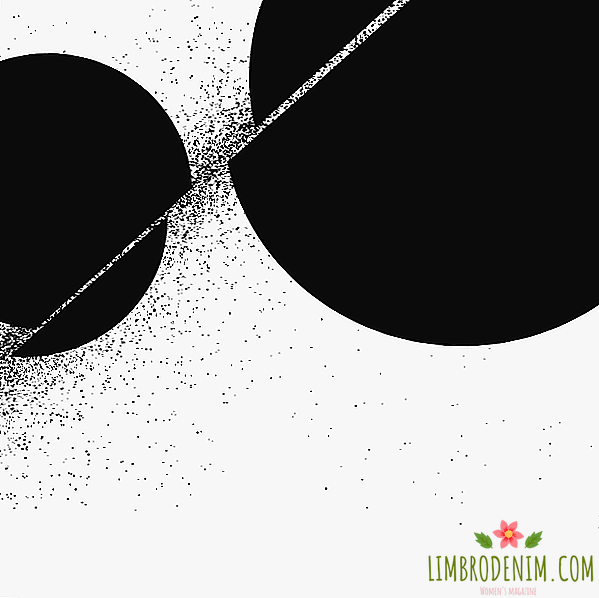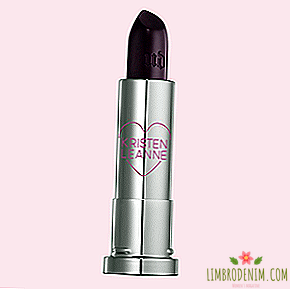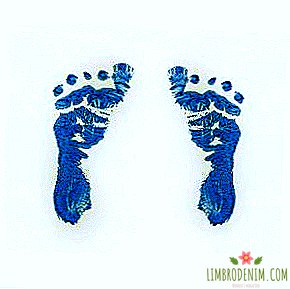Homo Consommatus on global cultural codes
Mark Homo Consommatus (translated as "Consumer Man") Alexey Sorokin launched in 2008 in St. Petersburg. A new brand, creating intellectual things, started talking after participating in several seasons of Aurora Fashion Week. Alexey chose a difficult path - he is concentrated around creating avant-garde design, which in Russia is still learning to love and consume. It is necessary to pay tribute, Alexei is looking for and creating new fabrics himself, technologies - that the right way is for the young designer. In general, it acts like a young Belgian and thinks about the subject of being. We talked with Alexey about who needs the avant-garde today, how to perceive and consume fashion, how cultural codes of humanity influence our perception of clothes and ourselves.

 Why did you become involved in design? What's your education?
Why did you become involved in design? What's your education?
I began to study as a designer long before St. Petersburg, then transferred to Muhu (St. Petersburg State Academy of Art and Industry named after A. L. Stiegitz. - Approx. Ed.) And finished six years here in the specialty "costume design", and at the same time he worked, gained experience in the fashion business. In the Bosco boutiques he worked as a salesman, then he was engaged in merchandising, studied. It was useful, because everything is visible from the inside. Then a diploma and six months later the first collection, consonant with the theme of the diploma: "Consuming Man."
 What was the point?
What was the point?
The idea was that a modern person possesses all of his qualities as a reasonable person and still remains a powerful consumer. On this irony, and the collection was built, and then everything was transformed into the philosophy of the brand.
 And the name, respectively. How is the situation with consumption now? are people not yet full?
And the name, respectively. How is the situation with consumption now? are people not yet full?
It seems to me that this will not happen. There are undulating processes that interrupt one another slightly, but I think that everything is just progressing. At least judging by the business of fashion, the scale of the emergence of new brands and names, it is hardly possible to talk about the crisis of consumption.
 What is the reason for the general appearance of brands and names?
What is the reason for the general appearance of brands and names?
This is the oversaturation factor. Fashion availability. Clothing has lost its core: to serve as a means for distinguishing the status of a person / society, one from another. Now the borders are completely erased. It was as if we were going to ensure that everyone was diverse and different, but the result is obvious - everything follows a pattern. Hence the wave of the reverse process: certain people will need things that no one else possesses. Once everything is so similar.
 Then why, if everything is impersonal, are the brands trying to get together and looking for a new creative jet, changing art directors?
Then why, if everything is impersonal, are the brands trying to get together and looking for a new creative jet, changing art directors?
Fashion business is too gigantic machine that absorbs everything. It doesn't matter if the mass market or conglomerates like LVMH. A fashion basically began with the fact that there were personalities. However, the personalities remained - designers who wander from one house to another. They exist, but they, too, are subordinated to such a strong commercialization. On the one hand, the personality of the designer, who makes some unique product, is less and less. Hence the need for it. On the other - the creator can not hide. In the same paradox! For example, the first collection of Nicolas Ghesquière for Louis Vuitton: he makes himself again. In the works of man, we see his inner expression, his portrait. And you, joining his clothes, you make just yourself with him.

 This, however, was the essence of the avant-garde design that you manifest along with the designer. Although in Russia, avant-garde thingsconsidered more like a piece of art. the reverse process you're talking about -return of the avant-garde, - we already see just look at the last show Comme des Garçons. Brings off his head. Did you specifically go on such a difficult path?
This, however, was the essence of the avant-garde design that you manifest along with the designer. Although in Russia, avant-garde thingsconsidered more like a piece of art. the reverse process you're talking about -return of the avant-garde, - we already see just look at the last show Comme des Garçons. Brings off his head. Did you specifically go on such a difficult path?
Personally, I find it difficult to do simple things, very simple.
 Understand. For a very long time it was difficult for me to write plain text - I always wanted to fill him with something superfluous. Express it.
Understand. For a very long time it was difficult for me to write plain text - I always wanted to fill him with something superfluous. Express it.
And not because you show off, but because you can't do it any other way. Here it is. I made myself these pants. They are simple. Why did I quickly make them? Because I did not make them. I said, "I want pants, I need pants." And I made these pants. Every day is good, but I do not see anything like that in them. Simple things I get good, but I'm not interested in doing simple. It is interesting to achieve what could not be achieved before.
 Do you work with stylists? help in creating new collections?
Do you work with stylists? help in creating new collections?
Now yes. When you have a collection of 60 bows - yes, you need a stylist. Or when the head does not cook what to connect. I was helped a lot by the work on merchandising in multi-brands: you understand what goes with what, what people need, what they react to, what color they choose.
 Where do you take the fabric?
Where do you take the fabric?
Italians come to us with their suitcases, everything is opened, shown. We work with strong Swiss, came to them through friends. In fact, the factories we order fabrics from do not participate in Première Vision, but they have very good quality material. I practically do not use accessories - I do not like buttons. Basically it is buttons, hooks - such that it is not visible.
 How did the shoes in the collection?
How did the shoes in the collection?
She was always. The first pair was ordered in the States, more precisely, the base - the block. There were such stripper shoes, which then my master brought to mind. Together with him, everyone thought out that no one fell off his shoes. Fear in the process of work - the main engine and brake. And the models, and the masters, all. Everyone is always afraid and scared at first. Models, for example, were afraid to walk on very high heels from the first collection. Potential customers are often afraid that they do not have such freedom, they are afraid to take it and have it. Tailors are afraid to do something wrong. Every time you tell them: let's try it, because it can be done and needed, it is interesting. When people stop being afraid, then everyone is revealed. Design is a struggle with fear.

Americans have the greatest sense of inner freedom today. They do not care how they will look and what

 English avant-gardist J.W. ANderson American critics are constantly accused of having completely forgotten about a woman, that he was carried away by the creation of new designs, and not clothing. At the same time, customers are not afraid of his crazy ideas, but rather attract them.
English avant-gardist J.W. ANderson American critics are constantly accused of having completely forgotten about a woman, that he was carried away by the creation of new designs, and not clothing. At the same time, customers are not afraid of his crazy ideas, but rather attract them.
Let's do this. Americans have the greatest sense of inner freedom today. They do not care how they will look and in what. Hence the relaxation and breadth of perception. They can look both in one and in the other equally well, because they are relaxed, because they do not have tightness and tension. Of course, I'm not talking about everyone. At least, sensations from society, from life. Lady Gaga, who can, in principle, put on her pajamas and go to the subway for a rehearsal, and look a certain way on stage, and appear in public in something crazy, and at the same time combine it all together. I think freedom is in it. And when we say that there are canons of beauty, this is a different story and more likely a European one. Because all of Europe has a very serious history.
If we consider fashion since the XV century, the canons changed in the same way as now. That is, all the canons have already been formed. If in the 15th century you only had a torso, the lower part was covered with a full skirt, no one was to see anything below the chest and face, now this is the whole body, only in certain signs. Fashion has always had signs. Therefore, listening to design critics about the deconstruction of body shape is a waste of time. The designer should not adapt to the critics. Only critics through time can adapt to it, because they see something different in it, as the fashion sign changes. And people like J.W. Anderson, are just engines. They move signs that change over time.
 What canons and signs exist now?
What canons and signs exist now?
If you look back 5-7 years ago, there were more distinct edges. The Japanese, the Belgians still retained their serious authority. And at the same time the Italians were afloat - they were bought. There was a clear separation, a clear structure: do you like the Belgians or the Comme des Garçons, or do you like the Etro Italians, or do you like something Central European - Scandinavian design, for example. And when the powerful PR of averaged identical clothes began, the structure was lost. When we look at the coat of Stella McCartney and the coat of Balenciaga, even now we do not understand the difference between them. And we immediately put a number of Zara and get confused finally. That is exactly what happened. And here we again return to the personality designers, who are now urgently needed, like the same J.W. Anderson.
 He is completely against the wind.
He is completely against the wind.
I agree. But at least it is of interest to many. And no matter how critics rate it, good or bad. There is attention to it. The main thing, following the creative path, not to lose their genes. After all, there are designers of the young wave, who started somehow powerful and impulsively and then made themselves a powerful commerce too.
 Plus small marks - that even the strangest thing can be tailored to a specific person.
Plus small marks - that even the strangest thing can be tailored to a specific person.
Flexibility, yes.
 What difficulties does a young designer face? Are you planning paris
What difficulties does a young designer face? Are you planning paris
We have been making presentations in Paris for three seasons in Paris, and we have already done them in New York. This is not a fast process of becoming a young brand: people will see you first, then they will be frightened, then they will calm down, then they will understand that it can be done, that it changes, that it is stable. For buyers, the stability of the brand is very important, because you do not have any serious history of protege. Buyers are looking at you, they understand that it's cool, great, interesting, different, but they treat you with great caution. You can not send everything on time and do not fulfill the order. Someone, in principle, on new brands almost does not leave budgets. The second focus and the main focus will now be on individuals and clients. Because when you communicate with a buyer who likes and who would like, he is a boned man. When you communicate with a particular person, with a person, he is ready in principle, because he has the opportunity to take and have it. I am closer to personal contact.
 You identified for myself market?
You identified for myself market?
Rather American. Despite the popularity of the mass market and something faceless in the mass, I still think that there is power. Adam Lipis - there is such a fashion house. He used to make semi-sportswear. Now he is making a very cool minimalist design with a high quality design. Then there is Tom Brown, who puts classic costumes on crazy shows. There is also a brand of Olsen sisters - The Row. It seems to me that there is more willingness among people to accept new things, no matter in what format. This is their psychology. Europe is still more constrained. I do not speak now about Russia. I do not want to say anything bad or good. It is important to consider fashion not from Russia, but from the outside.
 What is the difference between a person who can buy your unusual clothes and those who look, say, “What nonsense,” and leave the room?
What is the difference between a person who can buy your unusual clothes and those who look, say, “What nonsense,” and leave the room?
The difference is that you either come into contact with fashion in the narrow sense and you have the principle of accepting something vital in your head, that is, you give the right to the existence of the new. And there is - when you see black and white and think patterns. Or you just don’t think about it, you don’t touch, and then it doesn’t exist for you. As for many, something exists, but something does not exist.

Instincts: everyone is turned on by scenes of violence, execution, sex - and fashion continues to exploit it, as before,

 In that case, how does a fashion manage to remain a global global process?
In that case, how does a fashion manage to remain a global global process?
This is just because of the patterns. Due to the repetition of characters. Due to the fact that there are forms that everyone has already invented. Due to them, everything keeps, although it is changing. It is again issued as new, and this is absolutely not new. In this subconscious you have everything easily read. For example, the length of the skirt is a cut woman in pieces. This is an absolutely bestial story: about public executions, when people wanted to see severed heads. This is true. There are a number of studies on this topic of those who are engaged in fashion sociologically. Instincts: everyone is turned on by scenes of violence, execution, sex - and fashion continues to exploit it as before, as it did before. From the XVI century and until now the image of a woman in fashion is undergoing the same thing: it is cut into pieces, something is closed, something is opened, transformed. These are the signs inherent in the clothes that are read, on which everything rests. Someone understands, and someone feels in the subconscious.
 And what codes and forms do you work with? Are there duplicate methods?
And what codes and forms do you work with? Are there duplicate methods?
There is. There are a number of points and accents that are respected. I believe that this is important for each brand, for the brand. If you want to be recognized. I have contrasts of lengths (color or light), proportional (long - short). Geometry that keeps everything. It doesn't matter if it is symmetrical and static, or it is dynamic and chaotic. Maybe by ear they are perceived as common to all brands of things, but they are not. Then there are materials, for example, I like working with leather. There are tight-fitting silhouettes: flared, trapezoidal (when the shoulders or body hold the whole structure).
 Owned by these points, we get brand collaboration with the mass market, which is understandable to a wide range, even if they did not know about the fashion brand?
Owned by these points, we get brand collaboration with the mass market, which is understandable to a wide range, even if they did not know about the fashion brand?
Well, yes, you choose one of the elements and broadcast it as your brightest.
 Does a designer have to brag about first achievements?
Does a designer have to brag about first achievements?
What for? If you sell there, you can write about the points of sale on the site. If you have done something more specific, also inform the world about it. Fashion is often such endless commas: I did it, did that. This is sad, because this tangle is only confused every time and you will never see what is actually inside. I am different.
Things designer can be found in St. Petersburg: Boutique "Mystery", Rybatskaya Str., 3; Homo Consommatus showroom, Tyushin str., 11
Thanks for the help in organizing the shooting and interviews with the Aurora Fashion Week team




